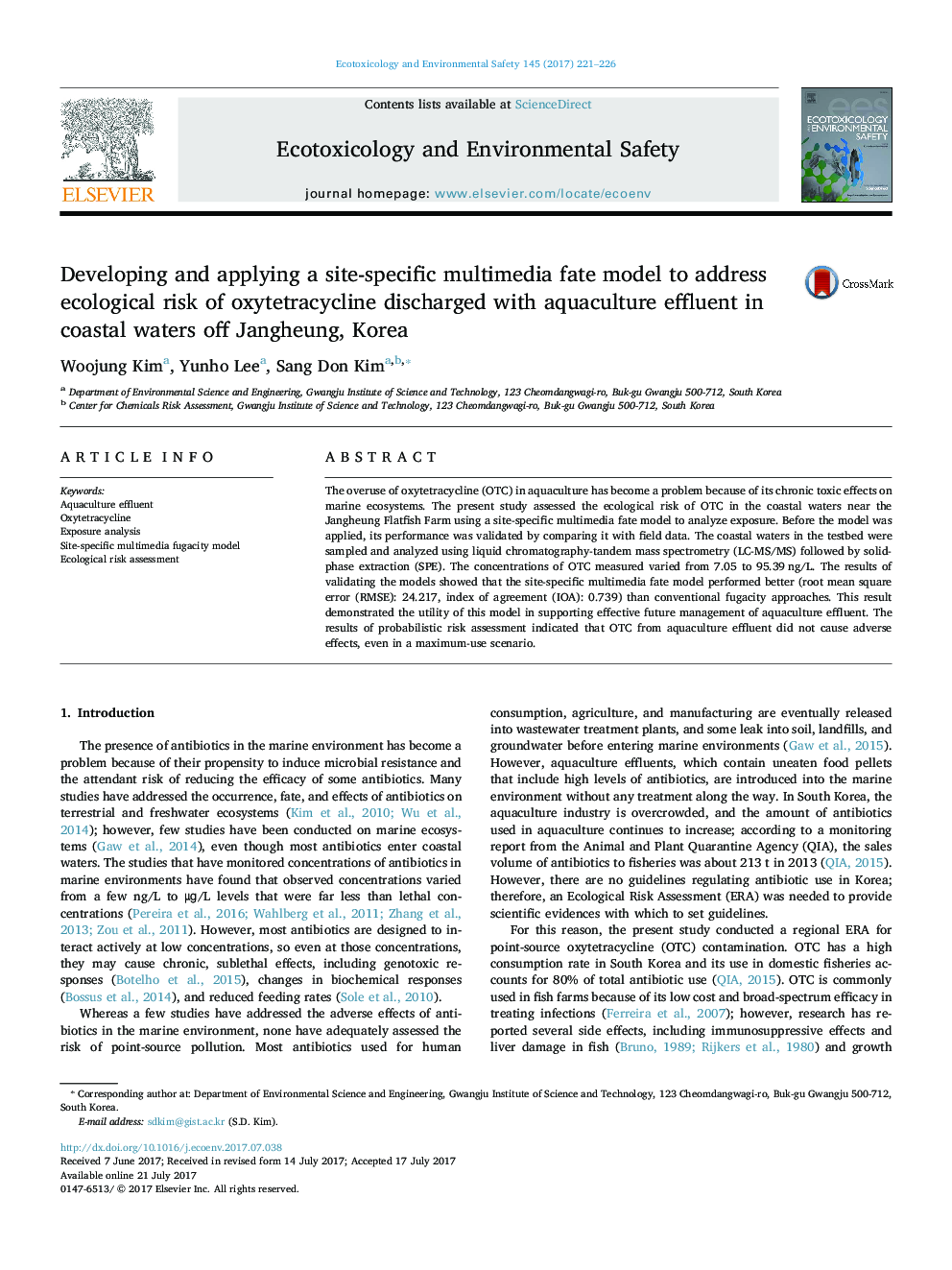| Article ID | Journal | Published Year | Pages | File Type |
|---|---|---|---|---|
| 5747751 | Ecotoxicology and Environmental Safety | 2017 | 6 Pages |
â¢The risk of OTC was evaluated using fate model and species sensitivity distribution.â¢OTC levels were monitored in coastal waters nearby the Jangheung flatfish farm.â¢Site-specific fate model showed better performance than the conventional tools.â¢Degradation rate constants are the key model parameters.â¢OTC from aquaculture effluent do not cause the adverse impact on marine ecosystem.
The overuse of oxytetracycline (OTC) in aquaculture has become a problem because of its chronic toxic effects on marine ecosystems. The present study assessed the ecological risk of OTC in the coastal waters near the Jangheung Flatfish Farm using a site-specific multimedia fate model to analyze exposure. Before the model was applied, its performance was validated by comparing it with field data. The coastal waters in the testbed were sampled and analyzed using liquid chromatography-tandem mass spectrometry (LC-MS/MS) followed by solid-phase extraction (SPE). The concentrations of OTC measured varied from 7.05 to 95.39Â ng/L. The results of validating the models showed that the site-specific multimedia fate model performed better (root mean square error (RMSE): 24.217, index of agreement (IOA): 0.739) than conventional fugacity approaches. This result demonstrated the utility of this model in supporting effective future management of aquaculture effluent. The results of probabilistic risk assessment indicated that OTC from aquaculture effluent did not cause adverse effects, even in a maximum-use scenario.
